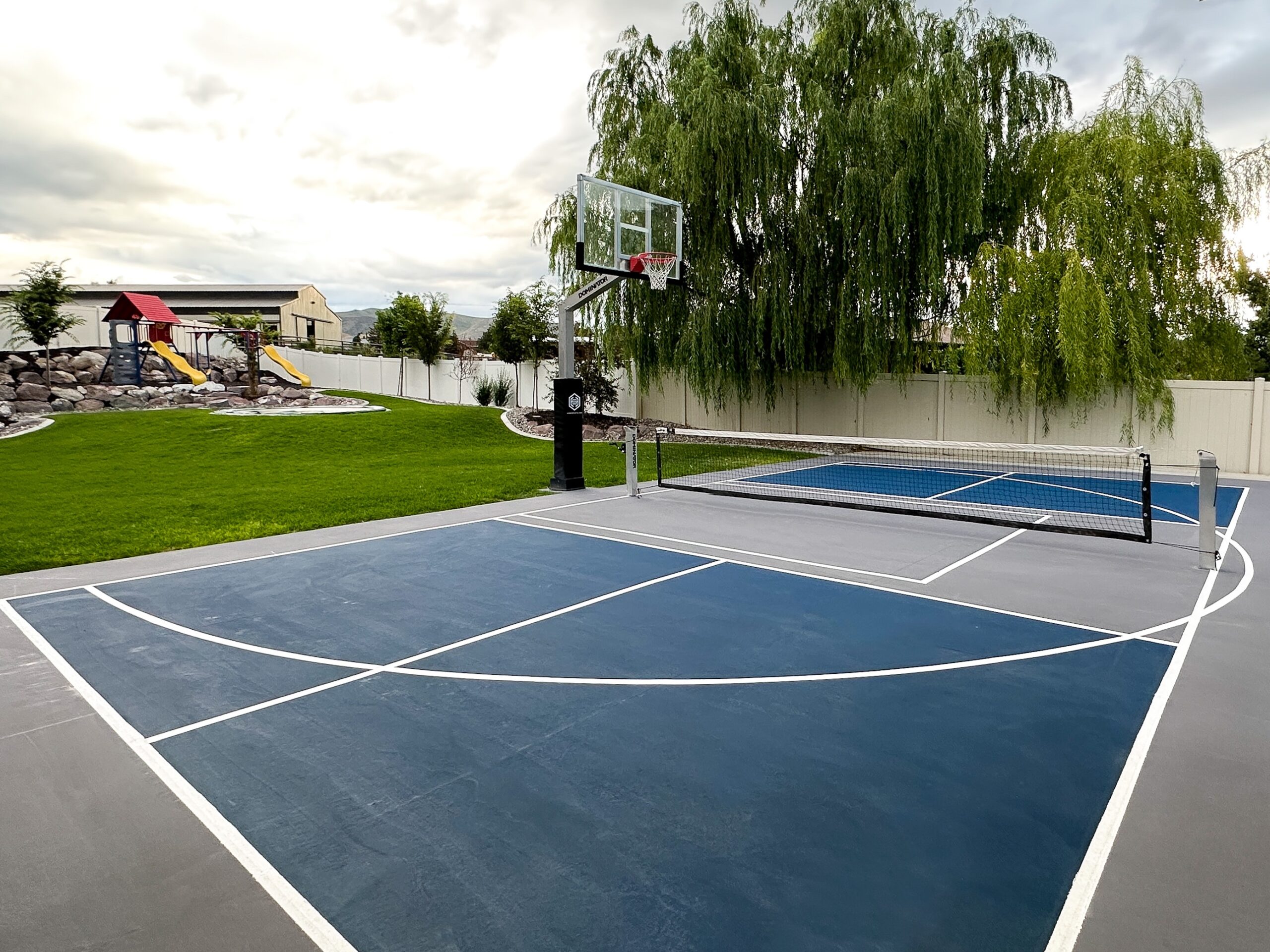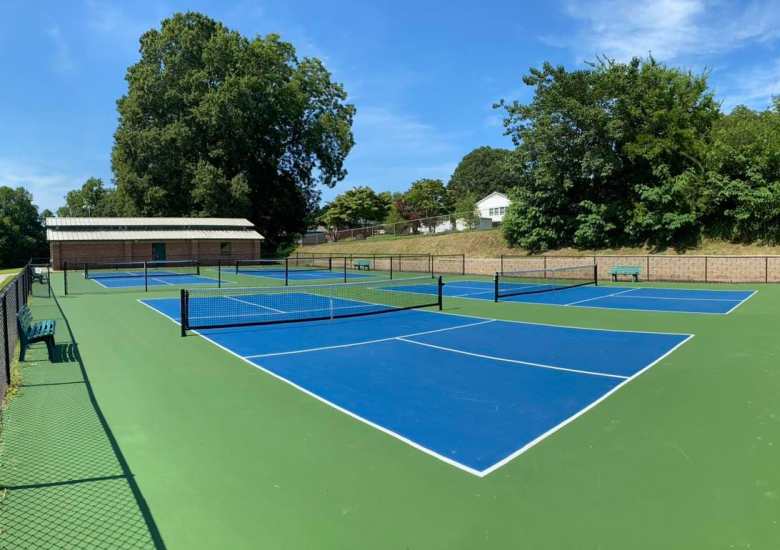Developments in Pickleball Court Construction: Trends You Ought To Know
Developments in Pickleball Court Construction: Trends You Ought To Know
Blog Article
Navigating Laws for Pickleball Court Construction in Your Location
Building a pickleball court in your area calls for a nuanced understanding of numerous local guidelines, including zoning legislations, building permits, and safety and security standards. Involving with local authorities and the area is important for ensuring compliance and promoting support.
Recognizing Local Zoning Legislations
When taking into consideration the construction of a pickleball court, recognizing local zoning legislations is critical to ensuring compliance and staying clear of potential legal problems. Zoning regulations determine how land can be utilized and commonly consist of specs pertaining to leisure facilities. These laws can vary substantially by municipality, affecting elements such as court positioning, sound, lighting, and dimension levels.
Prior to launching building, it is crucial to get in touch with the regional zoning board or preparation division to determine the certain regulations that relate to your residential property. Specific areas might restrict recreational activities, while others might require specific licenses or adherence to particular standards. It is also vital to think about troubles, which determine exactly how far frameworks have to be from property lines or various other buildings.
In addition, exclusive growths, such as property owner organizations (HOAs), might enforce their own regulations concerning the building and construction and use pickleball courts. Understanding these policies can protect against expensive modifications or litigation down the line. Engaging with neighborhood stakeholders and community members can offer useful understandings and foster support for your task, ensuring that it straightens with the community's assumptions and demands.
Obtaining Necessary Building Permits
Exactly how does one browse the complexities of getting essential structure authorizations for a pickleball court? The process begins with understanding regional guidelines and requirements set forth by municipal authorities. Usually, you will certainly require to submit a thorough site strategy that describes the recommended court dimensions, products, and layout. This plan must abide by zoning laws and any particular guidelines relating to leisure facilities.

When authorizations are obtained, it is important to stick to any kind of inspection routines and requirements throughout the building stage. Maintaining communication with regional authorities will certainly promote a smoother authorization process and assistance stay clear of prospective problems. By completely preparing and recognizing the permitting landscape, you can effectively browse the intricacies associated with creating a pickleball court while continuing to be compliant with all local policies.

Assessing Environmental Effect
When planning the construction of a pickleball court,A comprehensive evaluation of ecological effect is essential (Pickleball court construction). This analysis helps recognize possible impacts on local communities, water resources, and community aesthetics. Key factors to take into consideration consist of site option-- making sure that the court is not improved ecologically sensitive land, such as wetlands or habitats for threatened types
Soil security and drain patterns need to be assessed to avoid erosion and water merging, which might adversely impact bordering vegetation and wildlife. Furthermore, the choice of products is critical; going with environment-friendly and sustainable alternatives decreases ecological harm.
The implementation of effective stormwater management techniques is another important element, as it assists minimize drainage and sedimentation. Engaging with regional environmental companies can offer valuable understandings into policies and best practices particular to your area.
Finally, neighborhood input can be useful in understanding any neighborhood environmental worries and fostering assistance for the job. By conducting a complete environmental impact analysis, stakeholders can make sure look at this website that pickleball court construction aligns with sustainable practices and adds favorably to the area's environmental health.
Abiding By Safety And Security Standards
Guaranteeing conformity with security requirements is vital for the effective building and operation of a pickleball court. Abiding by established security regulations lessens the danger of crashes and injuries, guaranteeing a secure setting for players.
Secret safety requirements consist of appropriate court dimensions, surface products, and lights demands. The court needs to satisfy the main dimensions of 20 feet large by 44 feet long for doubles play, with proper buffer areas to avoid injuries from wayward rounds. Pickleball court construction. The surface area must be built from non-slip materials to boost traction and reduce the likelihood of falls
In addition, lights should suffice for night play, providing uniform illumination to prevent darkness that can hinder presence. Neighborhood building ordinance might also browse around these guys determine particular demands for secure fencing and internet height to ensure gamer safety and avoid unapproved accessibility to the court location.
Normal inspections and maintenance are necessary to support these criteria with time. By prioritizing safety compliance, court proprietors not only secure players but also cultivate a positive reputation within the community. This dedication to safety can encourage higher involvement and pleasure of the sport, eventually adding to its growth and sustainability.

Engaging the Neighborhood in Planning
Neighborhood participation in the drawing board of pickleball court building and construction can significantly improve the task's overall success. Engaging regional residents and stakeholders fosters a feeling of ownership and motivates joint decision-making, which can lead to more comprehensive support for the initiative.
To effectively involve the area, organizers need to initiate public conferences or workshops, supplying a platform for citizens to voice their point of views and choices relating to place, design, and services. Surveys and responses forms can likewise be made use of to gather understandings from a broader target market, ensuring that varied point of views are taken into consideration.
In addition, developing a neighborhood board of advisers can help with recurring discussions and address worries throughout the preparation process. This board can include agents from various demographics, such as local colleges, leisure organizations, and neighborhood watch, consequently intensifying area representation.
Efficient communication is crucial; updates regarding the project need to be routinely shared using newsletters, social networks, or regional notices. By focusing on community interaction, coordinators can cultivate enthusiasm, mitigate prospective opposition, and create a pickleball center that genuinely resonates with regional values and requirements. This collaborative approach not only improves the project yet also reinforces community connections.
Conclusion
In final thought, browsing the complexities of pickleball court building and construction demands a comprehensive understanding of neighborhood regulations, consisting of zoning legislations, structure permits, and security requirements. By adhering to these guidelines and promoting cooperation, successful execution of pickleball courts can be attained, promoting leisure opportunities and neighborhood well-being.
Creating a pickleball court in your location requires a nuanced understanding of different neighborhood policies, consisting of zoning laws, structure permits, and security requirements.When taking into consideration the construction of a pickleball court, recognizing neighborhood zoning legislations is critical to ensuring conformity and staying clear of potential legal concerns. By extensively preparing and comprehending the allowing landscape, you can efficiently navigate the complexities included in constructing a pickleball court while continuing to be compliant with all neighborhood policies.
In conclusion, navigating the complexities of pickleball court building demands a detailed understanding of neighborhood guidelines, consisting of zoning visit this page laws, structure permits, and safety and security standards. By adhering to these standards and cultivating cooperation, effective execution of pickleball courts can be accomplished, promoting recreational possibilities and neighborhood health.
Report this page